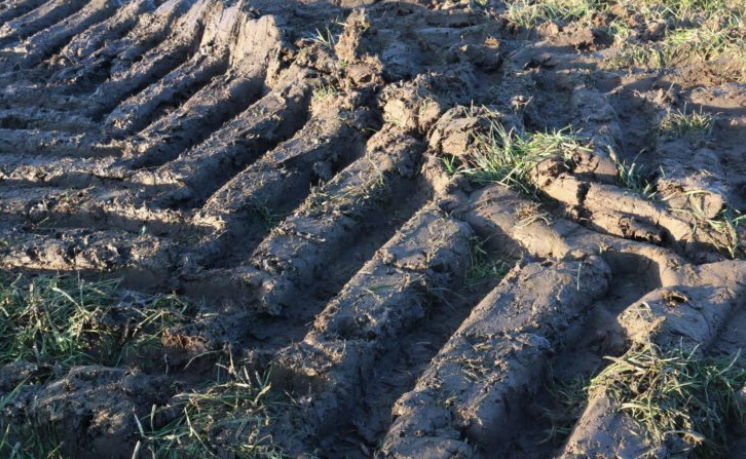Even moderate levels of soil compaction can reduce grassland output levels by 20%, according to Alex Higgins, from the Agri-Food and Biosciences Institute (AFBI).
“Tackling the problem can be problematic though,” he explained. “Works should be undertaken when the minimal level of further damage to the soil can be minimised.”
He went on to point out that the soil cracking so widely noticed throughout the UK and Ireland during last year’s drought had the benefit of breaking up compaction pans at lower depths within a soil profile.
However, he cast some doubt on the benefits that can be delivered by spikes and other types of soil aeration equipment.
“Farmers must identify where the soil compaction problem has arisen,” he explained. “Is it near the surface or is at a lower depth? Many of the techniques available to deal with compaction issues may only deliver a temporary respite to the problem.”
Higgins was one of the speakers participating in the series of seminars that featured at Sheep NI, held in Ballymena earlier this week.
He repeatedly stressed the need for all grassland farmers to have their soils tested and analysed on a regular basis.
The results can then form the basis of a bespoke fertiliser plan, given that each farm is different.
The AFBI scientist said that securing a soil sample that fairly reflected the make-up of the field from which it came is crucially important.
“We recommend taking a minimum of 25 core samples on a random basis from each field,” he said.
“In our own case we would take up to 40 samples, in the context of all research activities.”
Higgins defined soil health as the ability of a soil to deliver both optimal crop output while also maintaining the full environmental footprint of that soil.
He confirmed that low pH values continue to be the biggest hindrance to grassland output on sheep and other livestock farms in Northern Ireland.
“We are currently running a lime deficit of some 1.2 million tonnes,” he added.
This reflects the sharp fall-off in lime application rates during the early years of the last decade. Lime remains the most cost-effective fertiliser that can be applied on any grassland farm.
A recent soil health survey carried out by AFBI revealed that 44% of all fields tested had a pH value significantly below its optimal level.
“On sheep farms, this figure rose to 55%,” Higgins concluded.

